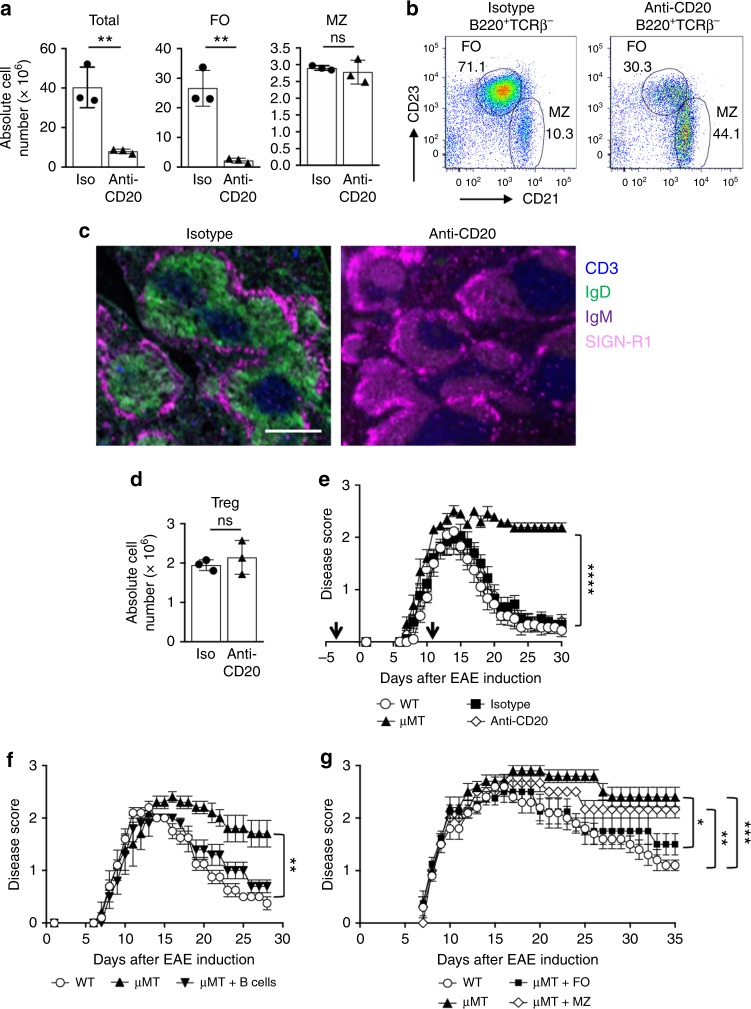Fig. 1.
B cells after anti-CD20 (IgG1) depletion exhibit regulatory activity. B10.PL mice were i.v. administered anti-CD20 (18B12IgG1) or its isotype control (2B8msIgG1), once (a–d) or twice, 14 days apart (250 μg) (e, black arrows). On day 14, the absolute number of total splenic B cells (B220+) (a), FO B cells (B220+IgM+CD21intCD23+CD93−) (a), MZ B cells (B220+IgMhiCD21hiCD23−CD93−) (a) and CD4+Foxp3+ Treg (d) was determined by flow cytometry. a, d Individual data points (mice) are shown superimposed upon the mean ± SEM. **p < 0.01. ns = not significant. b Representative flow cytometry dot plots with gating of splenic FO and MZ B cells shown for the isotype control (left panel) and anti-CD20 (right panel). c Splenic frozen sections from B10.PL mice treated with isotype control (left panel) or anti-CD20 (right panel) (250μg) were stained for CD3 (blue), IgD (green), IgM (purple), and SIGN-R1 (pink) 14 days post antibody treatment. Scale bar, 500 μM. e EAE was induced 3 days after the first antibody treatment by adoptive transfer of 1 × 106 encephalitogenic T cells. Clinical signs of EAE were evaluated daily and the data shown are the mean ± SEM daily disease score of nine to ten mice from two independent experiments. ****p < 0.0001, μMT vs. WT, isotype or anti-CD20 for the day 30 timepoint. f, g B10.PL mice were i.v. administered anti-CD20 (18B12IgG1) and 14 days after antibody administration total splenic B cells (B220+) (f), FO B cells (g), and MZ (g) B cells were FACS purified and 20 (f) or 5 × 106 (g) cells were adoptively transferred into sublethally irradiated B10.PLμMT mice and 3 days later EAE was induced as for e. WT and μMT control mice received PBS. The data shown are the mean daily disease score ± SEM of three to five mice from one representative experiment of two. f **p < 0.001, WT vs. μMT and μMT vs. μMT + B cells for the day 28 timepoint. e *p < 0.05, μMT vs. FO; **p < 0.01, WT vs. MZ; ***p < 0.001, WT vs. μMT for the day 35 timepoint. Statistical significance was determined using the unpaired t test

